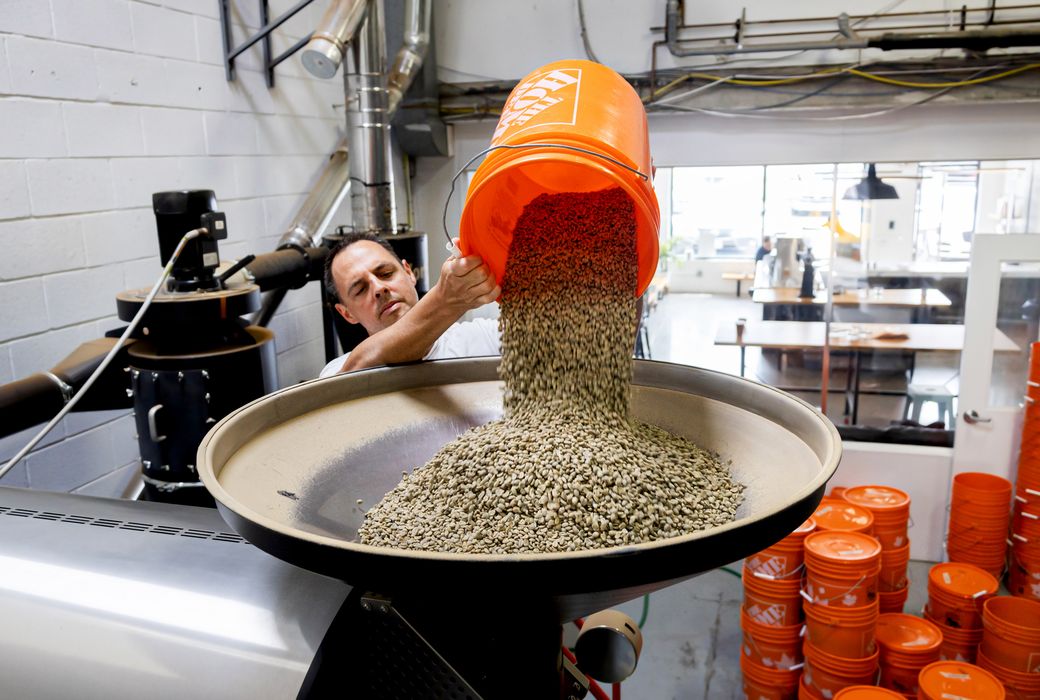Lourdes Coffee
Lourdes Coffee functions as a cafe and creative space, and even something of an art gallery and venue.
Named for the grandmother of owner Phil Rodrigues, it sits right across from The Stop, and engages in community partnerships with them and other local organizations like the Art for Cancer Foundation.
Art on display in the 15-seat space changes up every three weeks, pieces by Josh LeClerc on the walls during my visit offset by a neon Chinese food sign obtained from Kijiji.
A functioning piano promises cool performance opportunities for live musicians, and there’s also a monthly live comedy show featuring local stand-ups.
Beans are sourced from Reunion Island, their Cannonball for drip, Bullet for espresso, and Firefly as a decaf option. A local roasts beans here a kilo at a time once a week after close, and there’s occasionally a one-off pot floating around.
You won’t find any fancy or confusing Italian on the menu here: choices are listed simply as “espresso with water” ($3), otherwise known as an Americano, or an espresso with milk ($3.25 to $4.50).
Get anything iced for a 50 cent upcharge, and if it’s an Americano it’ll be gently stirred with filtered water and a little lemon for a traditional take.
Apparently Lourdes herself used to refrigerate leftover espresso and mix it with lemon water as a refreshing way of reducing waste.
Flash frozen croissants ($3 - $4.50) are actually imported from France by Ferrandina Foods, and do indeed have a very buttery, airy European quality. There’s also homemade banana bread ($2.50) and huge vegan cookies ($3.50).
Rodrigues chats with me about the possibility of breakfast sandwiches made with Portuguese buns, scrambled eggs and bacon.
Andrew Williamson






